 |
 |
|
 |
|
|
|
© Looking for Lincoln Heritage Coalition • #1 Old State Capitol Plaza • Springfield, IL 62701 • 217.782.6817 |
|
Among the early settlers of the Charleston area were Thomas and Sarah
Bush Lincoln, Abraham Lincoln's father and stepmother, who lived south
of town in a cabin on the Goosenest Prairie. Although Abraham Lincoln
was never a resident, he visited Charleston for business and pleasure
with some regularity. In the 1840s and 1850s, Lincoln tried many court
cases in the county courthouse including the famous Matson Slave Trial
in which he argued in favor of a local slave owner's rights. |
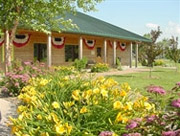
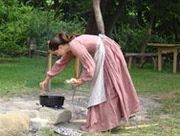
|
|
Vandalia, the state capitol from 1820 to 1839, is the place where Lincoln officially started his
political career when he was elected the state legislator from New Salem in 1834. The vote to make
Springfield the capital was a controversial one and Lincoln played an important part in that effort.
The Vandalia Statehouse is an elegant structure in the federal style, which was built by city
residents in a failed attempt to keep the capital in Vandalia. All three branches of state government
were contained in this building for the first time in the state's history. Across from this imposing
building is a small pocket park where visitors can take a photo of Lincoln sitting with the capitol
in the background. Vandalia is located at the junction of I-70, US-51 and IL-85. |
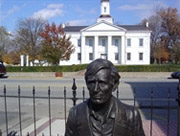
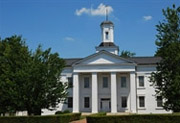
|
|
The village of Bement is situated in the heart of Illinois between Champaign and
Decatur. The historic site, just a short block south of Veterans Memorial Park, is
located at the intersection of Illinois highway 105 and Wilson Street. Beautiful old
shade trees shelter picnic tables and a series of three Looking for Lincoln wayside
exhibits describing the Bement connection to Lincoln and Douglas. |


|
|
Once known as Middletown, this Champaign County community, settled in 1832, was situated midway between both Danville
and Bloomington and Danville and Decatur, county seats along the 8th Judicial Circuit. As Middletown grew, so did
inns and taverns, and Lincoln is thought to have stayed in at least two of them. The Nine Gal Tavern, colorfully
named for the nine red-headed daughters of its proprietor, was actually known as the Ohio Tavern when Lincoln
purportedly stopped there. |
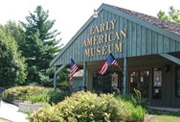
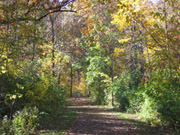
|
|
Danville is the first stop from the East coming from I-74 and for those looking for a unique location, try
picturesque Danville/Vermilion County, ideally located on I-74 in the heart of Central Illinois. For the
history buff-- had you been walking down Vermilion Street in Danville in the early 1850's you very possibly
might have run into a tall, somewhat unkempt, young attorney crossing from his office to the courthouse to
argue a case in the 8th Judicial Circuit. |
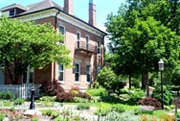
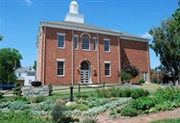
|
|
Macon County Historical Museum Complex This five-acre site contains a number of buildings
that help to interpret the heritage of the area. Called the Prairie Village, this complex
contains the Mueller Gun Shop, which by means of a recently produced video retraces
Lincoln’s history in Macon County. An old Log Court House, originally on another site was
saved and moved to this property. It is significant because Lincoln tried two cases in
this building. |


|
|
Macon County has a rich Lincoln history and many Lincoln “firsts.” Decatur was the first
Illinois home of the Abraham Lincoln family, he was first nominated for the presidency at
the state Republican party convention and he made his first political speech in downtown
Decatur. In addition when he rode the circuit he tried several cases in Decatur. The log
courthouse where those cases were heard still exists in the Prairie Village at the Macon
County Historical Society Museum. The museum also features a video called “Lincoln in
Macon County” that tells the story of his relationship to this area. |
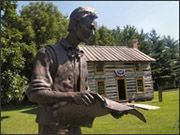
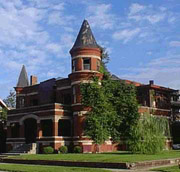
|
|
This new museum is the only one in Illinois that
retraces the senatorial debates of 1858 between Abraham Lincoln and Stephen Douglas.
One of these debates took place in Charleston on this spot. The museum addresses the
significance of the debates, what the issues were and how these important dialogues
affected the country. Using exhibits, interactive displays, audio selections, artifacts
and photos, the story of the Lincoln Douglas Debates is told in an interesting a
compelling way. The museum also includes a Children’s Hands-On Area, a Gift Shop and a
life-size sculpture of Lincoln and Douglas. |



|
|
Lincoln Log Cabin State Historic Site Lincoln Log Cabin was the home of Thomas and Sarah
Bush Lincoln, father and stepmother of a future president. This is the last home that his
father owned. Today the site includes a working, living history farm developed around a
two-room cabin. Nearby is a second farmstead, the Stephen Sargent Farm. It was moved to
this site in order to help visitors understand rural life in Illinois during the 1840’s
and enable them to compare two different farms. The site also offers a broad array of
interpretive programs, a beautiful visitor center and museum and gift shop. This site
is currently closed. While non of the buildings are open it is possible to explore the
grounds. Call 217-345-1845 to check for special events. |



|
|
Completed in 2002, this reproduction of an early Danville court house tells of Danville’s
rich Lincoln history. He tried over 200 cases in the courts here and had many friends in
this community. As visitors enter the museum, the first thing they see is an imposing
statue that represents the Lincoln that his friends from Danville would have recognized. |



|
|
While the general focus of this museum is on the history of Champaign County and east
central Illinois, exhibits throughout the museum describe Lincoln’s Champaign County
contemporaries and the environment as it would have been during his many trips to the
county. A journey through this museum helps to create a picture of what life was like
on the prairies as Lincoln traveled the 8th Judicial Circuit. Another section of the
museum describes the impact that the Civil War had on Lincoln’s Champaign
acquaintances who quickly joined the Union Forces when war was declared. Exhibits
throughout the museum highlight the connection to the Lincoln story. |



|
|
Lincoln spent his first years as a legislator in Vandalia which was the capital of Illinois from
1820 to 1839. Here began to hone his skills as a legislator and an orator and it is here that
his fellow legislators began to recognize his leaderships skills. The building is an imposing
white-painted brick structure situated on an attractive public square in downtown Vandalia.
Totally restored and appropriately furnished, a tour of this building is a lesson in the early
politics of Illinois and Lincoln’s place in that story. Please call ahead to confirm hours of
operation: 618-283-1161 |



|
|
Dr. William Fithian was Danville’s most prominent physician during most of the 19th Century.
The house that he built is still standing and is part of the Vermilion County Museum Complex.
Lincoln was known to have spent time in this home as Dr. Fithian was not only a doctor, but
was also very active in Vermilion County politics. In 1858, during the senate campaign, Lincoln
made an impromptu speech from the second floor balcony outside the bedroom that he frequently
occupied. The house contains a bed that Lincoln slept in that night. The home is located next to
the newly completed Vermilion County Museum. |


|
|
In 1823, the General Assembly deeded the land and provided the funds for the first
structure built on this site. The legislative act stated that the land and the funding
were to be used to erect a "House of Divine Worship, free for all denominations to
worship in...." In 1867, the old House of Divine Worship was moved to a new location
and the Presbyterians built the church currently on the site. |
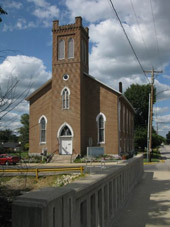
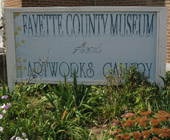
|
|
Bryant Cottage was built by Bement businessman Francis Bryant in 1856. The four-room cottage is open to the public
seven days a week for tours, twelve months a year, with extended hours on special days throughout the year. For
groups of 15 for more, arrangements are available by calling (217) 678-8184. |

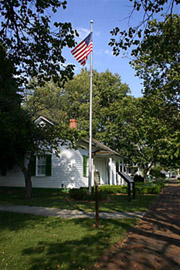
|